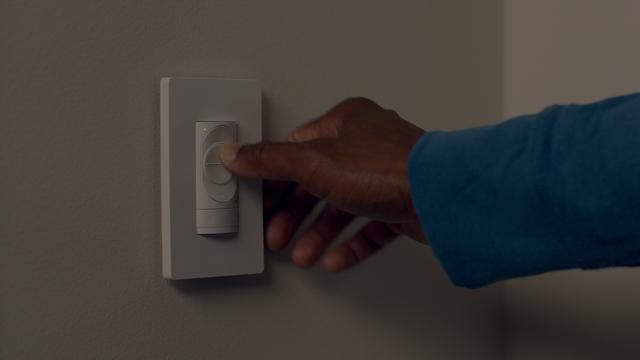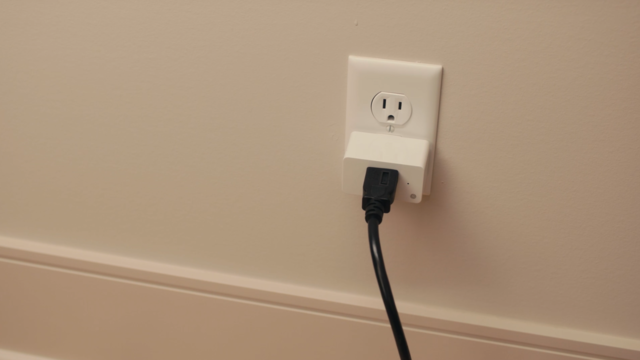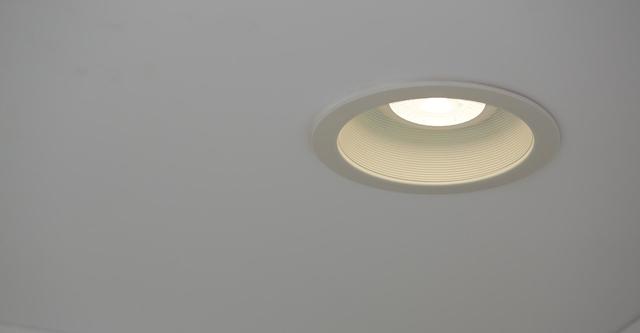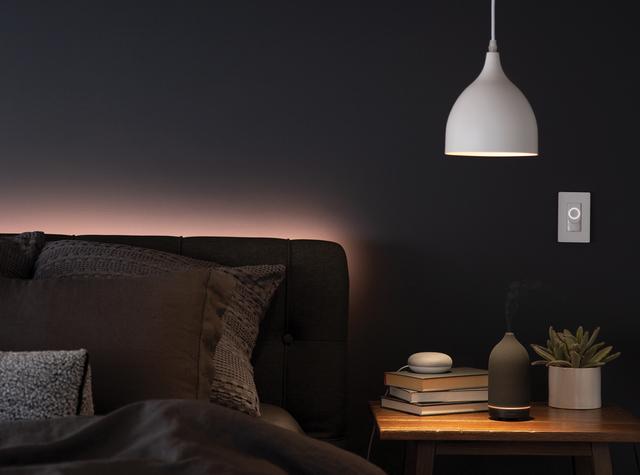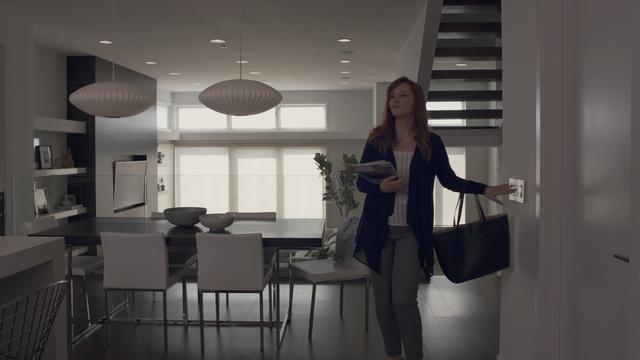How to install a dimmer switch in a few easy steps
Hey there, DIY-er! Let’s talk about dimmer switches. Aside from the awesome style and mood-setting capabilities, changing to a dimmer light switch is a great way to save energy and extend the life of your light bulbs. Plus, dimmer switches allow you to get the exact lighting you want for your space, letting you adjust the ambience as you need.
You may be curious to know if installing a dimmer switch is possible to do yourself, and the answer is yes! Follow along as we answer some of the most common questions about dimmer switches and provide step-by-step installation instructions.
Selecting the right switch
First thing’s first, we need to make sure you select the right switch.
Which switch you’ll need—either a neutral wire or no neutral wire switch—depends on your house having neutral wiring. To get an idea, check what year your house was built. If it was built in the mid-1980s or later, it likely has neutral wires. Houses built prior typically won’t have neutral wires, meaning you’ll need a no neutral wire switch.
If you’re unsure whether you have neutral wiring or not, you can check the switch box on the back of a light switch in your home by following these steps:
Note: You’ll need a flathead screwdriver.
1.) Turn off the power at the circuit breaker for the switch you’re replacing.
2.) Confirm there is no power to the circuit by flipping the switch on and off.
3.) Remove the wall plate of the existing switch by unscrewing it.
4.) Unscrew the existing switch from the electrical box and slowly pull it out of the wall.
5.) Don’t remove any wires from the switch. Take a photo of the wiring for reference.
6.) If you see a white wire—or a group of them—then you have neutral wiring in your house. You should see four wires connected to your existing switch.
- Black/Red wire (Load) - This wire is usually black/red in color. It goes from one terminal on your existing switch to your light fixture.
- Black wire (Line) - This wire comes out of your junction box and goes into a terminal on your existing switch.
- White wire (Neutral) - This wire is usually white in color and connects the neutral wires from your light fixture, junction box, and existing switch.
- Green or Copper wire (Ground) - This wire is usually green in color or bare copper. It comes out of your junction box and connects to a terminal on the switch. This may not be present in older houses.
7.) If there are no white wires connected to your existing switch, it might be bundled towards the back of the electrical box. Try pulling the wires from the back out and see if you find a bundle of white wires. Those are your neutral wires.
8.) Place the switch back into the junction box and remount all screws. Ensure all wires neatly fit back into the switch box. After mounting the switch back to the wall, place on the wall plate and secure it with screws.
9.) Turn on the power at your circuit breaker and check if power has returned to the switch.
If you are still unsure whether your house has neutral wiring, please consult a licensed electrician for assistance.
What is the difference between wired and wire-free switches?
Conventional wired light switches are a permanently connected control which opens and closes an electrical circuit, allowing an electrical current to flow from a power source to lights and appliances. If your light box has wires, you’ll want to go with the wired option. Wired switches are a great solution that will make your traditional bulbs smart!
Wire-free light switches can be placed on any wall in your house for convenient use of lights. The wireless receiver/transmitter is wired into the circuit and installed in an electrical box in your home. If your light box has no wires or if you want to add another switch for a light, you can simply peel and stick anywhere.
Can I install a dimmer switch for any type of light?
You will need to check what kind of light is connected to the existing on/off switch. So long as the bulb is dimmable, it should be compatible with a dimmer switch. A dimmer switch can be installed anywhere that an existing on/off switch is already installed. We have dimmer switch options for newer neutral wire homes (built mid-1980s or later) and no neutral wire homes (built pre-mid-1980s).
NOTE for no neutral wire homes: If you’re installing a no neutral wire dimmer switch, you may need to use a Bulb Adaptor. Conveniently, a Bulb Adaptor is already included in the no neutral wire package. To find out if a Bulb Adaptor is required, just like above, check the kind of light that will be connected to the soon-to-be-installed dimmer. If the bulb is dimmable, it should be compatible with a dimmer switch. This handy chart will help:
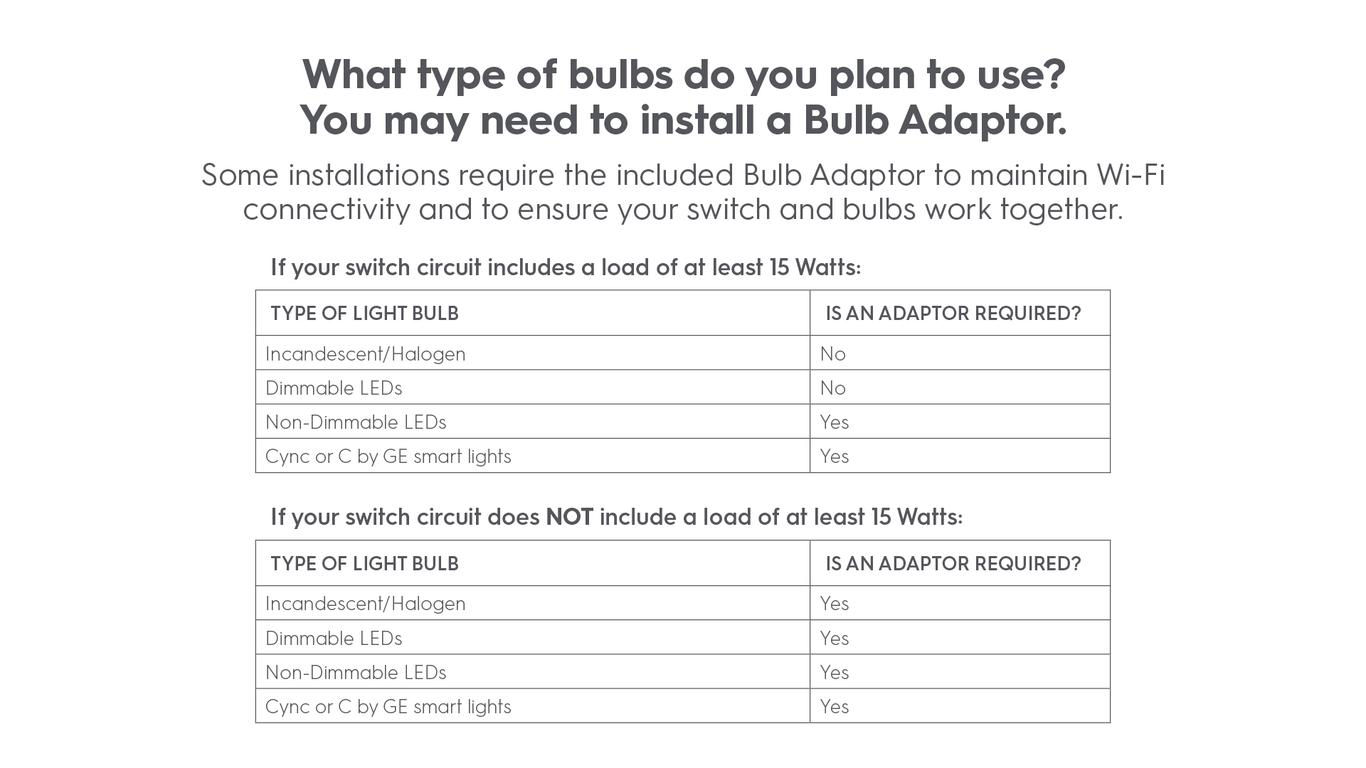
How do I install a Bulb Adaptor?
If you find that your installation requires a Bulb Adaptor, installation is pretty easy. Just:
1.) Twist the Bulb Adaptor onto the base of the bulb.
2.) Screw the bulb into the fixture.
NOTE: Only one Bulb Adaptor is needed per switch, even if there are multiple light bulbs on the circuit. If installing in a recessed can application, you may need to adjust the recessed can depth to ensure the bulb is flush.
What should I do if the Bulb Adaptor does not fit my bulb or fixture?
Good news! You still have other options:
- Replace your lights with incandescent, halogen, or dimmable LED light bulbs that meet the 15-Watt minimum load requirement. See a list of compatible bulbs by using our bulb finder.
- Install our Fixture Adaptor to the actual fixture in the ceiling. For install instructions and where to get a Fixture Adaptor (available separately), contact Customer Support at 1-844-302-2943.
Does my home need to have a ground wire?
If you are installing a wired switch, then yes, your home needs to have a ground wire.
If your home doesn’t have a ground wire, you can install a wireless dimmer switch instead.
What do I need for the installation?
When you purchase one of our Cync wired switches, your package will include:
- A Dimmer Switch
- A Wall Plate
- 4 Wire Nuts
- 2 Long Phillips Mounting Screws
- 4 Short Phillips Mounting Screws
- A Bulb Adaptor (only with no neutral switches)
- Wire Labels
You’ll need to supply these tools to get the job done:
- Phillips Head Screwdriver
- Flathead Screwdriver
- Non-Contact Voltage Tester
- Wire Stripper
- Measuring Tape
- Needle-Nose Pliers (optional, but handy)
What safety precautions do I need to take before removing the old switch?
Any dedicated DIY-er should know that safety is of the utmost importance. Follow our directions safely and attentively to make sure this installation proceeds as planned. Now let’s get into it!
1.) Head to your breaker, and turn off the circuit that powers your switch.
2.) Check if the light still has power by turning it on and off before you begin.
3.) Leave this circuit off while you work.
Note: Make sure you feel comfortable with the job by being thorough in your preparation. You can always call an electrician to perform the installation, but if you want to do it yourself, we’ll tell you all you need to know!
COMPATIBILITY
! IMPORTANT NOTE ON 3-WAY WIRING:
Some lights have one wall switch, while others are controlled by two or more wall switches (such as stair lights, which have a switch at both the top and bottom of the stairs). If your lights have more than one switch (called a 3-way), we’ve created instructional videos for how to install and enable the capability. 3-way control requires two Cync wired switches or one wired and one wire-free.
Step-by-step installation instructions
Once you’ve taken precautions by making sure the power is off, you’re ready to begin your installation. Below you’ll find step-by-step instructions for both a 3-wire (no neutral) and 4-wire (neutral) installation. We estimate that installation will take about 30 minutes. You can also follow along with our video guide installation:
Now, let’s get going with our wired switch installation instructions!
Step 1 – Turn Off the Power!
Before you do anything, make sure you’ve turned off the power following the steps above.
Step 2 – Remove Your Old Switch
1.) Safely remove the faceplate off the existing light switch.
2.) With the cover now removed, use a Non-Contact Voltage Tester and run it around the black wires in the junction box to confirm that none of the wires are live.
- This is important so that you can check for potential hot wires before you handle them.
- If multiple switches are in the same box, test them as well.
3.) Remove the mounting screws above and below the switch.
4.) Pull the entire switch out so that it is easier to reach the wires in the junction box, and take a photo of the wiring for reference.
5.) Use wire labels to mark the wires attached to the switch. These wires are the ones you need to connect to your new switch.
NOTE: For 4-wire (neutral required) installation, neutral and ground wires are required. If you don’t have either wire, the Cync Smart Switch is not compatible.
For 3-wire (no neutral required) installation, a ground wire is required. If you don’t have this wire, the Cync Smart Switch is not compatible.
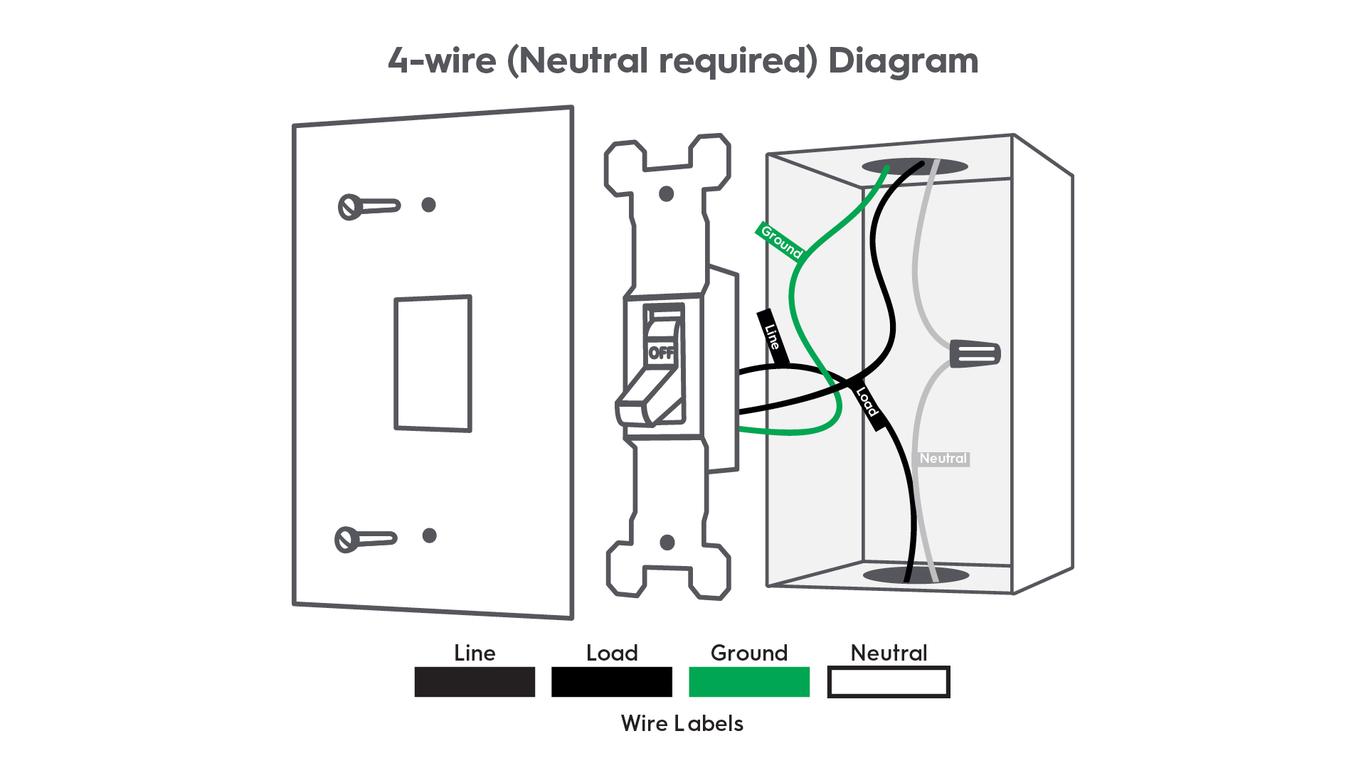
6.) Loosen the wire nuts and unhook the wires to disconnect them.
7.) The end of your wires should have approximately 3/8 to 5/8 of an inch of the copper wire exposed. If you have less than that, strip the wire using a wire stripper.
Step 3 – Connect the Wires
In this section, we are going to outline instructions for 4-wire (neutral) and 3-wire (no neutral) installation. Find your type of installation below for step-by-step connection instructions.
For Neutral / 4-Wire Smart Switches & Dimmers, connect the wires using the wire nuts in the following order:
1.) Connect the neutral (white) wire on the switch to the neutral (white label) wire from the wall.
2.) Connect the black line wire from the switch to the line (black label) wire from the wall.
3.) Connect the load red wire from the switch with the load (red label) from the wall.
4.) Connect the ground (green) wire on the switch with the ground (green label) wire from the wall.
5.) Cap the 3-way/multi-way traveler wire (if applicable). For the 3-way switch setup, visit cyncsupport.gelighting.com.
Attention: Incorrectly connecting the ground wire from the wall to the ground wire on the switch may damage the product.
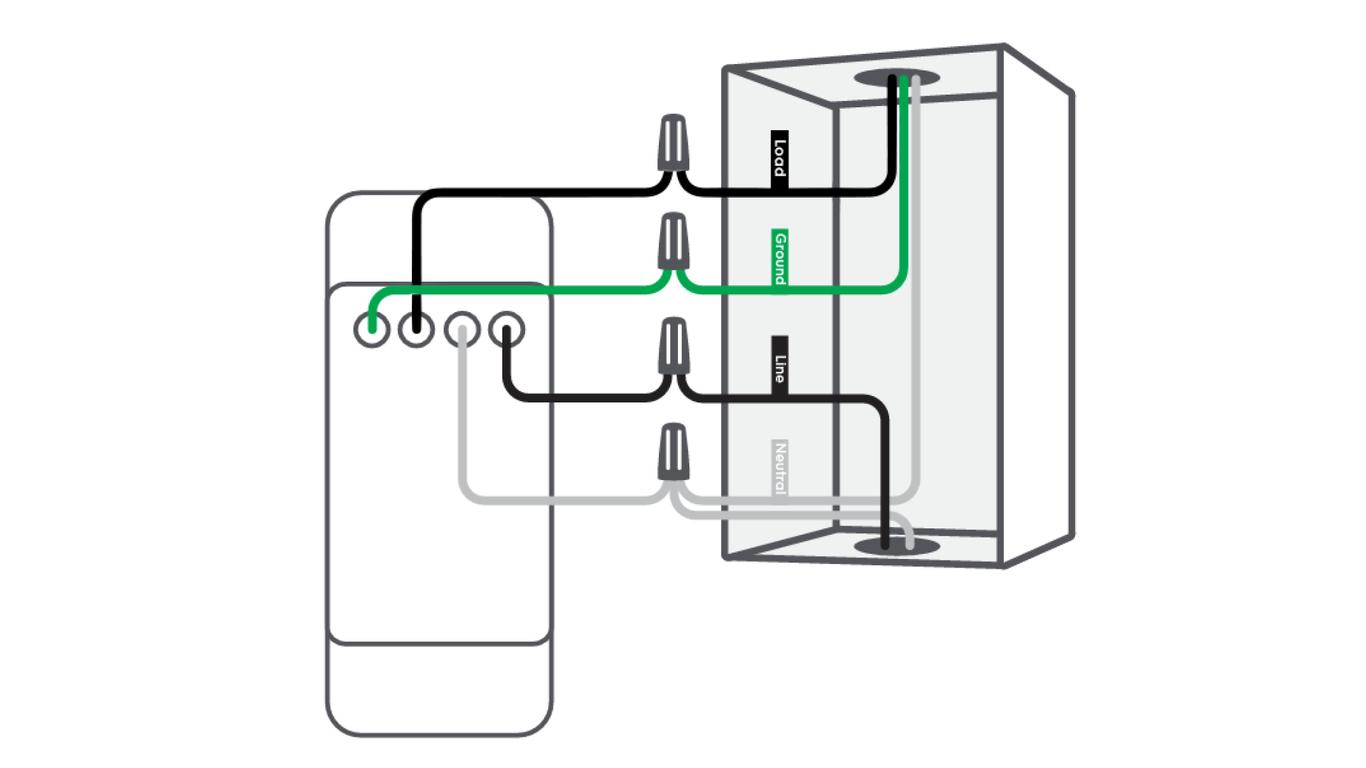
For No Neutral / 3-Wire Smart Switches & Dimmers, connect the wires in the following order:

Note: Both black wires on the switch are interchangeable and can be connected to either the load or line wire from the wall.
1.) Connect the first line/load (black) wire on the switch to the line or load (black label) wire from the wall.
2.) Connect the second line/load (black) wire on the switch to the line or load (black label) wire from the wall.
3.) Connect the ground (green) wire on the switch with the ground (green label) wire from the wall.
4.) Cap the 3-way/multi-way traveler wire (if applicable). For 3-way switch setup, visit cyncsupport.gelighting.com.
Attention: Incorrectly connecting the ground wire from the wall to the ground wire on the switch may damage the product.
5.) Cap the neutral wire from the wall (if applicable). Neutral wire is not required to operate this switch.
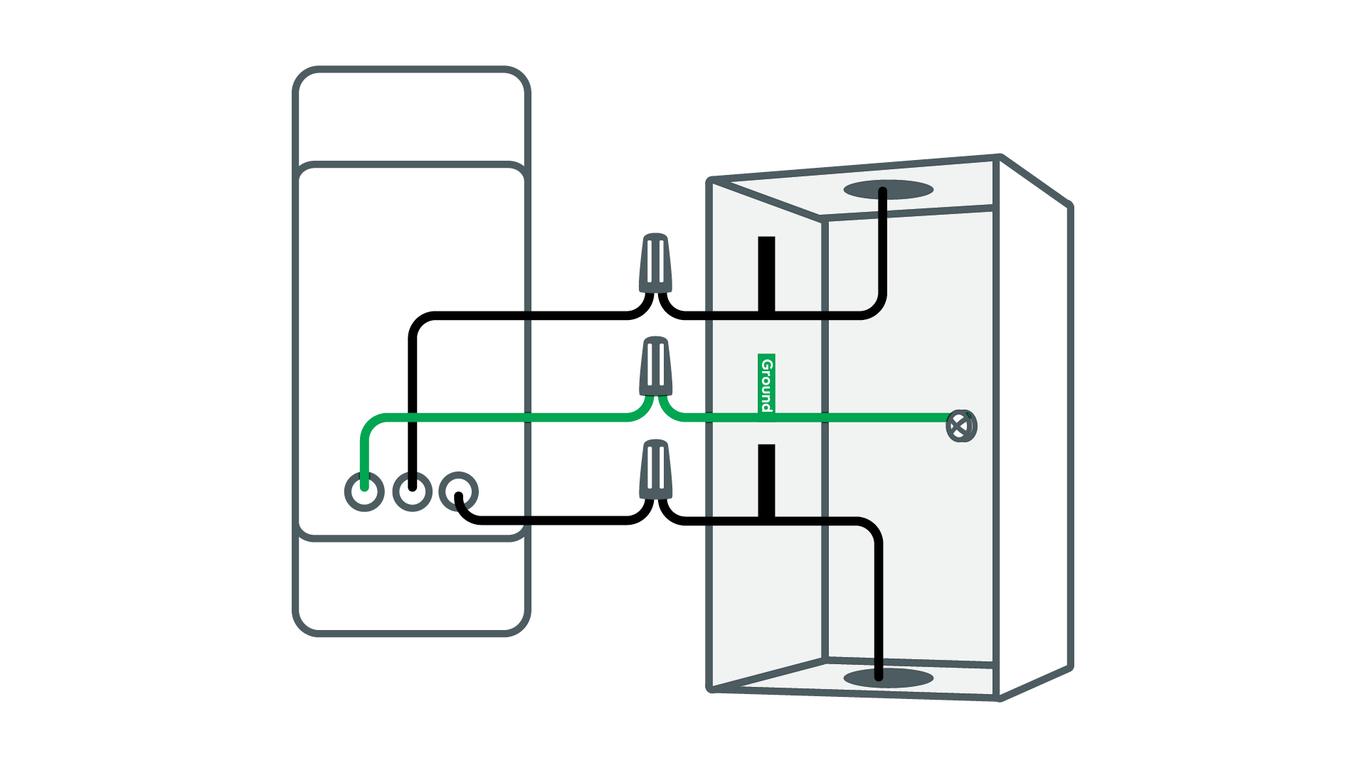
Step 4 – Fit Wires Into Wall Box
1.) Neatly push the wires back into the box, rotating the switch so it’s oriented according to the image below.
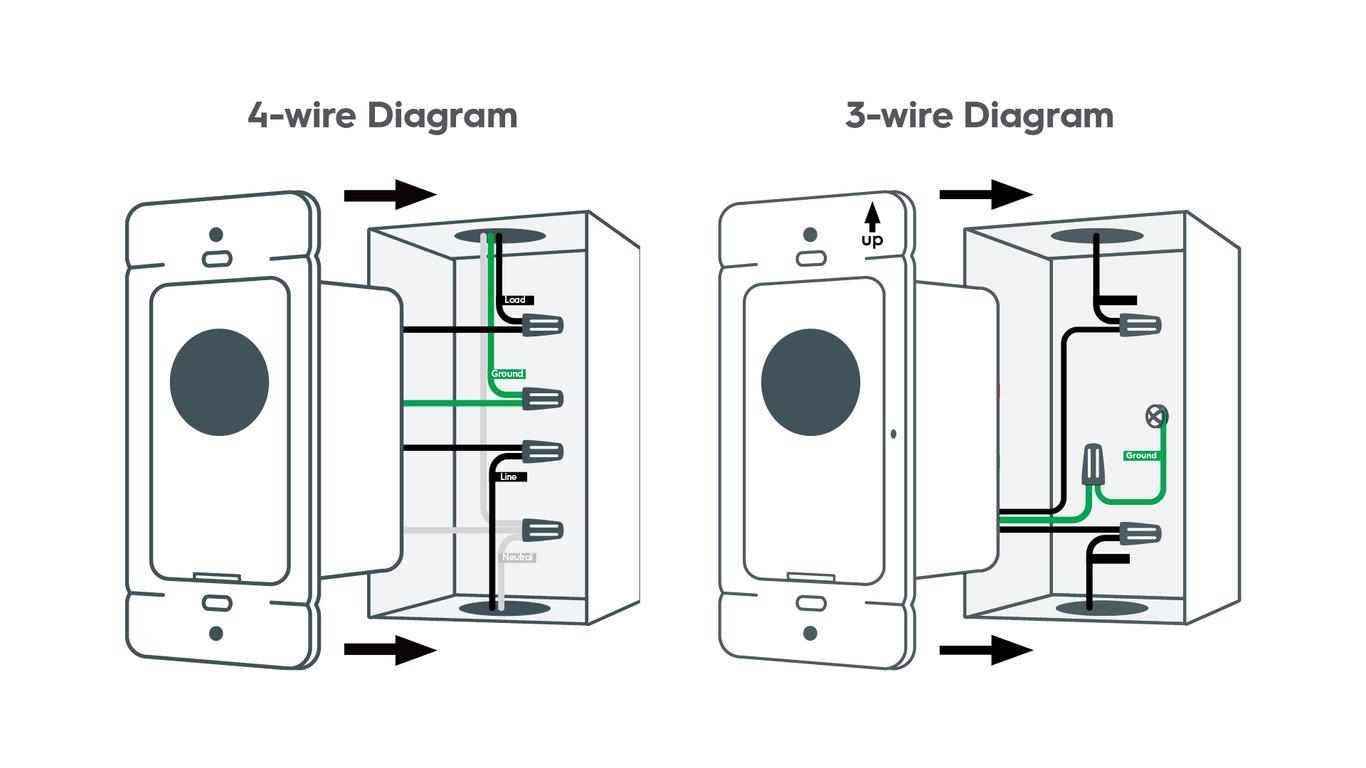
Step 5 – Secure the Switch
1.) Using a Phillips screwdriver and the screws provided, secure the switch to the wall until level and flush.
2.) Screw on the wall plate bracket, then snap the faceplate cover onto the bracket.
Note: If you are using your existing wall plate, you may need to replace the existing wall plate screws with the short screws provided.
Step 6 – Turn the Power Back On
1.) After the switch is secured and the faceplate is mounted, turn the power back on at the circuit breaker box.
2.) The light ring will flash blue indicating the device is wired correctly and the device is in setup mode. Press any button on the switch to enable setup mode if setup mode times out.
Troubleshooting:
The LED indicator light or light ring will flash blue until the switch is added to the Cync App.
The LED Indicator light will not illuminate if wired incorrectly or if the switch circuit does not meet the specified load requirements.
If lights don’t turn on:
1.) Check that the air gap switch is depressed.
2.) Check that the power to the switch is on at the breaker.
3.) Turn power off at the breaker, return to the switch, and confirm the wires are securely and properly wired according to the installation guide.
If lights flicker, experience intermittent power loss, or won’t completely turn off:
1.) Be sure to select the correct bulb type in the Cync App.
2.) Your installation may require a Bulb/Fixture Adaptor or a different bulb type.
Go to cyncsupport.gelighting.com for more troubleshooting.

Congratulations! You’ve completed the Smart Switch installation. Next,
1.) Download the Cync App
2.) Add your Smart Switch to the Cync App
3.) Set up your Google Assistant or Amazon Alexa voice assistant (optional)
To enable your voice assistant, connect your Google Assistant or Amazon Alexa voice assistant to the Cync App. Then, try commands like:
- Alexa, turn off the living room.
- Alexa, turn on the bedroom.
- Alexa, set kitchen to 50%.
- Hey Google, turn on the lights.
- Hey Google, good morning.
- Hey Google, I'm leaving.
We’re so excited for you to enjoy energy savings and enhanced ambience.
If you have additional questions, consult a licensed electrician or contact customer service for more lighting tips and inspiration!
